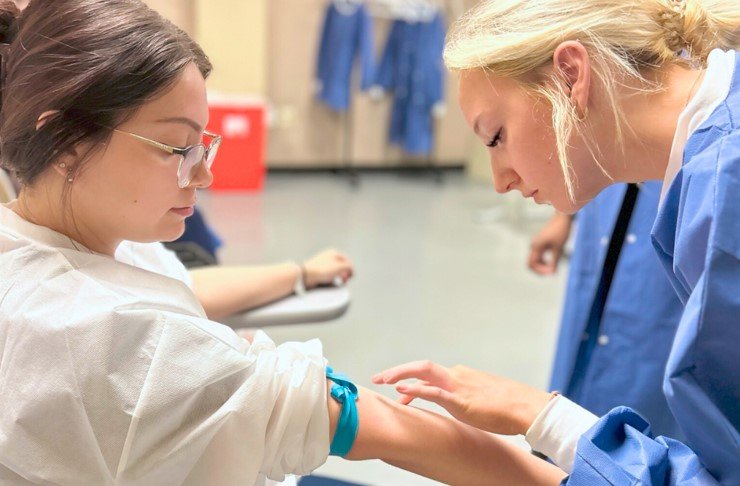Optimizing Supply Chain Management for Rural Hospitals: Strategies and Case Study
Summary
- Rural hospitals face unique challenges in ensuring they have an adequate supply of medical equipment and resources to meet the healthcare needs of their communities.
- Strategic partnerships with group purchasing organizations can help rural hospitals access discounted rates on medical supplies and equipment.
- Implementing effective inventory management systems and leveraging technology can also help rural hospitals optimize their Supply Chain processes.
Introduction
Rural hospitals play a critical role in providing healthcare services to communities that may otherwise lack access to medical care. However, these hospitals often face challenges in ensuring they have adequate supply and equipment resources to meet the healthcare needs of their patients. In this blog post, we will explore strategies that hospitals in rural areas can implement to optimize their Supply Chain management and enhance their ability to deliver quality care to their communities.
Challenges Faced by Rural Hospitals
Rural hospitals face unique challenges when it comes to supply and equipment management, including:
- Limited access to suppliers: Rural hospitals may have fewer options for sourcing medical supplies and equipment, which can result in higher costs and limited availability.
- Limited budget: Due to lower patient volumes and Reimbursement rates, rural hospitals may have limited financial resources to invest in new equipment or supplies.
- Logistical challenges: The rural location of these hospitals can make it difficult to receive timely deliveries of supplies and equipment, leading to inventory shortages and disruptions in patient care.
Strategies for Ensuring Adequate Supply and Equipment Resources
1. Partner with Group Purchasing Organizations (GPOs)
One effective strategy for rural hospitals to overcome Supply Chain challenges is to partner with group purchasing organizations (GPOs). GPOs leverage the collective purchasing power of multiple healthcare organizations to negotiate discounted rates with suppliers. By joining a GPO, rural hospitals can access cost savings on medical supplies and equipment, allowing them to stretch their limited budgets further.
2. Implement Effective Inventory Management Systems
Effective inventory management is crucial for ensuring that rural hospitals have the necessary supplies and equipment on hand to meet patient needs. By implementing automated inventory tracking systems, hospitals can monitor stock levels in real-time, identify trends in supply usage, and optimize reorder quantities. This can help prevent stockouts, reduce waste, and improve overall operational efficiency.
3. Leverage Technology
Technology can play a key role in optimizing Supply Chain management for rural hospitals. Electronic Health Records (EHR) systems can be integrated with inventory management software to streamline the procurement process and track supply usage. Additionally, telemedicine technologies can help rural hospitals collaborate with larger healthcare systems to share resources and expertise, reducing the need for expensive equipment investments.
Case Study: Optimizing Supply Chain Management in a Rural Hospital
Let's take a look at a case study of how a rural hospital successfully optimized its Supply Chain management processes:
- The hospital partnered with a GPO to access discounted rates on medical supplies and equipment, resulting in significant cost savings.
- Implemented a cloud-based inventory management system that integrated with the hospital's EHR, allowing for real-time tracking of supply usage and automated reordering.
- Utilized telemedicine technology to collaborate with specialists at a larger healthcare system, reducing the need for costly investments in specialized equipment.
Conclusion
In conclusion, hospitals in rural areas face unique challenges in ensuring they have an adequate supply of medical equipment and resources to meet the healthcare needs of their communities. By implementing strategic partnerships with GPOs, effective inventory management systems, and leveraging technology, rural hospitals can optimize their Supply Chain processes and enhance their ability to deliver quality care to their patients.

Disclaimer: The content provided on this blog is for informational purposes only, reflecting the personal opinions and insights of the author(s) on the topics. The information provided should not be used for diagnosing or treating a health problem or disease, and those seeking personal medical advice should consult with a licensed physician. Always seek the advice of your doctor or other qualified health provider regarding a medical condition. Never disregard professional medical advice or delay in seeking it because of something you have read on this website. If you think you may have a medical emergency, call 911 or go to the nearest emergency room immediately. No physician-patient relationship is created by this web site or its use. No contributors to this web site make any representations, express or implied, with respect to the information provided herein or to its use. While we strive to share accurate and up-to-date information, we cannot guarantee the completeness, reliability, or accuracy of the content. The blog may also include links to external websites and resources for the convenience of our readers. Please note that linking to other sites does not imply endorsement of their content, practices, or services by us. Readers should use their discretion and judgment while exploring any external links and resources mentioned on this blog.

